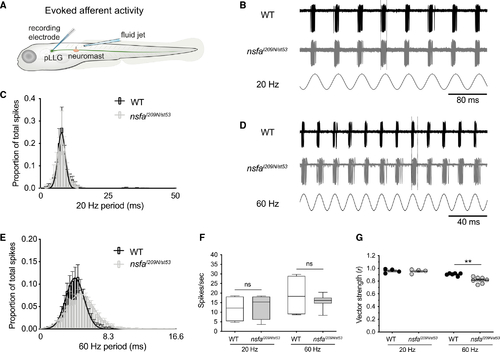Figure 4.
- ID
- ZDB-FIG-231002-60
- Publication
- Gao et al., 2023 - Sensory deficit screen identifies nsf mutation that differentially affects SNARE recycling and quality control
- Other Figures
- All Figure Page
- Back to All Figure Page
|
Decreased phase locking to mechanical stimuli at hair-cell ribbon synapses in (B) Representative traces from WT (upper) and (C) Average spike latency histograms from all spikes during 60 continuous seconds of 20-Hz stimulation. WT latency values (black bars) and (D and E) The timing of evoked spikes is less tightly coupled to a higher-frequency stimulus in the (F) Spike rate comparison between WT and (G) Vector strength (r) of the coupling between stimulus and response (phase locking) between WT and |
| Fish: | |
|---|---|
| Condition: | |
| Observed In: | |
| Stage: | Day 5 |

